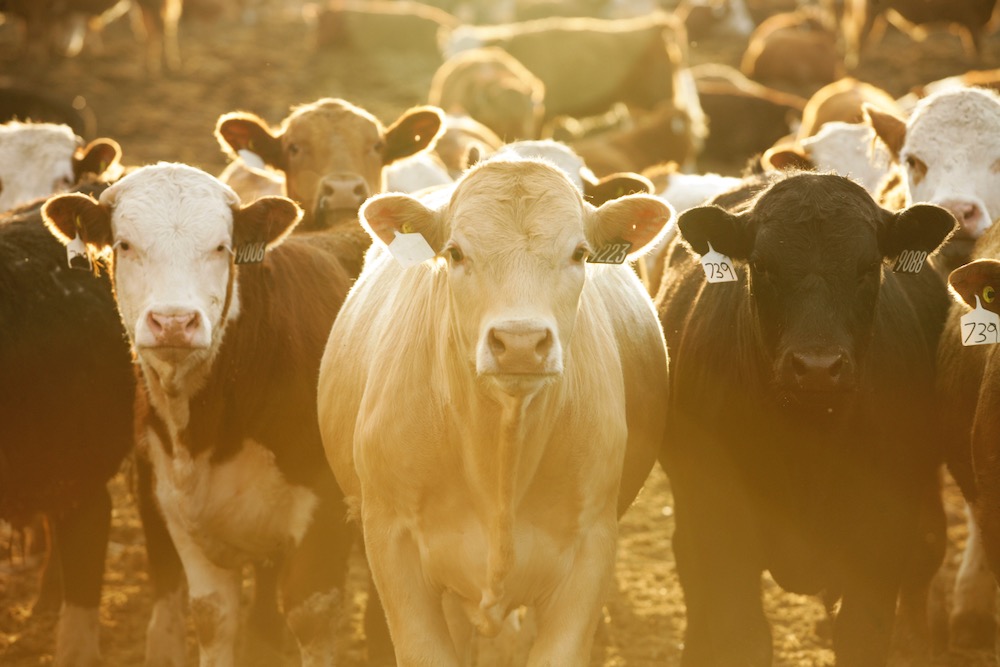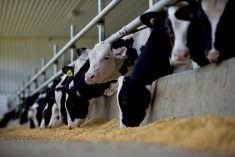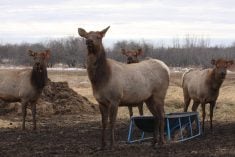(Resource News International) — The Canadian livestock industry has essentially prepared itself as much as possible for the pending
implementation of the U.S. government’s controversial country-of-origin-labelling (COOL) legislation at the end of the month, according to officials from the cattle and hog industries.
“There had been much apprehension about the implementation, but recent changes to the rules by the (U.S. Department of Agriculture) has allowed the Canadian industry to breathe a bit easier,” said Martin Rice, executive director with the Canadian Pork Council.
Read Also

U.S. livestock: Cattle futures drop on Trump call for lower prices
Cattle futures on the Chicago Mercantile Exchange dropped sharply on Wednesday, reacting to comments from United States President Donald Trump…
USDA, on Sept. 12, announced that meat from slaughter animals born in Canada will now be able to be mixed with meat from U.S. origin slaughter animals and be simply marked with a single label denoting a product of Canada and the U.S.
Rice said that was a change from just a month ago, when the USDA issued an interim final rule for COOL. Under the original terms of that rule, it was feared that meat from animals born and fed in Canada but shipped into the U.S. for slaughter would have to be identified with labels denoting a product of Canada and the U.S., but with Canada always appearing as the first country on the label.
There were concerns that U.S. packers, many of whom normally buy animals from Canada and mix them with U.S.-origin animals, would have been forced to segregate the two, a potentially costly exercise that could have led to reduced demand for Canadian livestock, Rice said.
“There has certainly been no question that the U.S. COOL rules have had a large effect on the attitudes and the anxiety levels of Canadian producers who ship cattle and feeder pigs to the U.S.,” Rice said, noting that in some cases the pending changes have cast a dark cloud over the investment prospects for the industry.
Rice said there has been no evidence yet that the pending COOL changes have had an impact on Canadian livestock. “Part of that was due to the USDA amendments,” he said.
However, Rice cautioned, there was still a lot to be worked out.
Rice said the pork council will monitor the effects of the COOL implementation very closely to see if the new regulations widen the price gap for hogs and pork between the two countries by an even larger amount.
“If there is a huge price widening, then the Canadian government will have the evidence needed to initiate a challenge under terms of the Canada/U.S. Free Trade Agreement or the World Trade Organization,” Rice said.
Not as challenging
“Because of the USDA amendments to COOL, it does not appear at this time as if the new rules will be as challenging to Canada’s cattle sector as we first anticipated,” said Rob McNabb, general manager of the Canadian Cattlemen’s Association.
“However, we as an industry will still have to wait and see what is the ultimate outcome of that rule.”
The U.S., he said, will continue to require Canadian cattle in order to help meet demand, and because of that, U.S. buyers will figure out a way to deal with COOL as a result.
There was a drop off in U.S. demand for feeder cattle after July 15, which was the date that any Canadian cattle that was already in the U.S., or from any other country, would be deemed residents of the U.S., McNabb said.
“There was a drop-off in feeder cattle orders in particular, as they would still be on feed as of Sept. 30,” he said, noting that until USDA recently made the amendment to COOL, there was much uncertainty as to what the requirements for bringing in the animals was going to be.
McNabb, however, felt that once the COOL rules have been implemented and as there is more confidence in doing the paperwork, shipments of livestock between the two countries should resume more normal levels.











